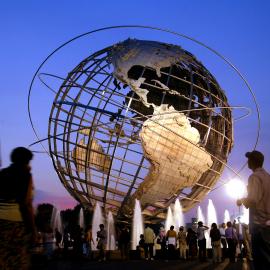To the Editor:
Many defenders and critics of "globalization" accept as fact that global income distribution has become more unequal over the past several decades. For example, W. Bowman Cutter, Joan Spero, and Laura D'Andrea Tyson state that "as globalization has intensified, the gap between per capita incomes in rich and poor countries has widened" ("New World, New Deal," March/April 2000). Official U.N. documents also suggest a widening gap. Much growing hostility toward globalization -- manifested in the streets of Seattle and Washington -- is grounded in the belief that the rich are getting richer while the poor are getting poorer.
A careful examination of the World Bank's 1999 development indicators illustrates that inequality across countries neither increased nor decreased unambiguously from 1965 to 1997. However, more than 80 percent of the world's people in 1965 lived in countries in which per capita income growth to 1997 exceeded the world average (1.3 percent per year). Regionally, there were great disparities, with most of Asia converging toward the rich countries and most of Africa diverging sharply. Altogether, if one looks at income trends in the last part of the twentieth century, inequality across countries did not grow.
Between 1965 and 1997, the richest 10 percent of the world's population increased its share of the economic pie from 50.6 percent to 59.6 percent while the poorest 10 percent increased its share from 0.3 percent to 0.5 percent. As a result, the average income of the top 10 percent fell from 160 times the average income of the bottom 10 percent to 127 times. Both the richest 10 percent and the poorest 50 percent gained shares while those in the middle lost.
Comparing the performance of developing countries with the performance of rich countries also produces mixed results. Average income in the 15 richest countries in 1965 grew at 2.1 percent per year to 1997 (the United States grew at 1.6 percent per year). Per capita income growth was higher in 20 developing countries, of which the most populous 9 are Brazil, India, Pakistan, Egypt, Malaysia, Indonesia, Thailand, Korea, and China. These 9 countries alone have more than 2.8 billion inhabitants, compared to fewer than 700 million in the richest 15 countries and about 5 billion in all 105 countries examined.
Thus, although income in most poor countries diverged from incomes in the rich countries, the great majority of people live in developing countries where incomes have been converging toward the rich countries. Other evidence suggests that, far from increasing inequality, the globalization of industrial capitalism may well be behind the rapid income growth for many of the world's poor, accelerating the convergence process rather than undermining it.
BERNARD WASOW
Senior Fellow, Century Foundation
